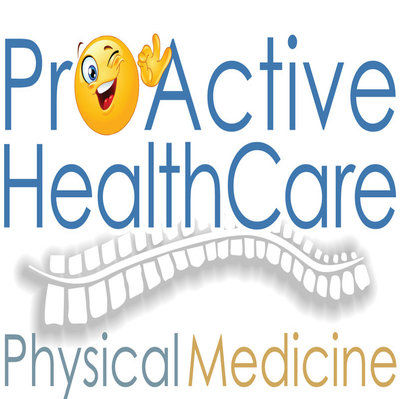Why Choose Proactive Healthcare?
Advanced Injury Diagnosis
We use stress X-rays, MRI review, posture and movement analysis, and objective testing to identify ligament injury, disc damage, and functional loss that routine exams often miss.
Med-Legal Documentation That Holds Up
We provide clear, evidence-based reporting for attorneys and insurers — including narrative reports, impairment ratings, ligament laxity documentation, age-dating analysis, and Plaintiff IMEs.
Primary Spine Care Expertise
Care
is led by Nate Burdash, D.C., FPSC(C) — a trauma-trained, MRI-qualified
Primary Spine Care provider with extensive training in spinal
biomechanics, imaging review, and med-legal reporting.Care is led by Nate Burdash, D.C., FPSC(C) — a trauma-trained, MRI-qualified Primary Spine Care provider with extensive training in spinal biomechanics, imaging review, and med-legal reporting.
We Help Patients With:
• Auto injuries and whiplash trauma
• Disc and ligament instability
• Chronic and post-traumatic headaches
• Posture and occupational strain
• Unresolved pain that hasn’t improved with other care
• Chronic or recurring back pain from posture, work demands, or everyday stress
Convenient & Patient-Centered
We offer same-day appointments, accept most major insurances, and support HSA/FSA patients.

Injured in a Car Accident?
Don’t let your injury go unidentified or minimized. At Proactive Healthcare, we specialize in post-traumatic spinal injury diagnosis, med-legal documentation, and evidence-based rehab.
✔ Stress X-rays (AOMSI & ligament laxity)
✔ MRI interpretation for disc injury and annular tears
✔ Narrative reports, impairment ratings, and attorney collaboration
✔ Same-day appointments available
Suffering from Headaches?
Many headaches are caused by structural and neurological injury, especially after trauma. Our Headache Relief Program combines imaging, motion studies, and neurological rehab for lasting relief.
✔ Cervical ligament testing
✔ Disc & facet evaluation
✔ Neuromuscular + vestibular rehab
✔ 10-week structured program
👉 Learn More: Headache Relief Program
Neck & Back Pain Relief
Whether caused by sitting, posture, strain, or age — your pain has a cause, and we’ll find it. We use biomechanics, spinal movement analysis, and targeted rehab to correct it at the source.
✔ Movement-based chiropractic
✔ Posture & decompression strategies
✔ Functional strength and stability training
✔ Custom exercise programming via WebExercises®
Call our office at (651) 778-0080 for an appointment today!
Our YouTube Posture Videos
Welcome to our YouTube channel dedicated to exercises for improving posture!
Are you tired of feeling uncomfortable or experiencing pain from poor posture? Our channel is here to help you correct your posture and feel great again!
Our expert trainers have developed a series of exercises designed to target and strengthen the muscles responsible for maintaining proper posture. Whether you're a student, office worker, or just looking to improve your overall health, our exercises are suitable for all ages and fitness levels.
So, why wait? Subscribe to our channel today and start your journey towards better posture and a healthier, happier you! Don't forget to hit the notification bell to stay up-to-date with our latest videos."
Visit our YouTube page Now!
I have been to many different chiros and PTs but Proactive Healthcare is so much different. They don’t just lay me down and push on my back and then put me on heat and stim. The clinic is full of all sorts of rehab devices. I work on my vision, balance, strength, and breathing. If something new hurts some day they have lots of therapies for the symptoms such as cupping, acupuncture, and vibration. I was skeptical about how vision drills could help my pain, but they really do. If you have tried different places and only get temporary relief, try Proactive Healthcare and I don’t think you will be disappointed.
Robert
Having suffered from chronic pain for over 6 years. I had trouble walking up stairs and have not been able to run of a mile without severe knee pain afterwards. After a few treatments with Dr. Burdash I no longer have a limp and can now run 2 miles without pain for the first time in over 6 years. Discomfort went from an average of 6/10 to 1/10 and I plan on signing up for a 5k run next summer.
Bill
I had tried seeing an orthopedic, primary care doctor and multiple physical therapists over the last few years for my shoulder pain. Dr. Burdash has gotten my pain to go away after a couple of visits with a completely different approach. He showed me some unique ways to move my shoulder and afterwards it doesn’t hurt with all movements. The exercises are easy to do at home and work for a few minutes a day to keep the pain away.
Barb
I had terrible balance issues and consistently have to look at the ground when I walk and use the handrails when using steps. Dr. Burdash has shown me specific drills to work on my vestibular system in my brain and now I feel far more stable. People are now commenting that my posture is much better, and I am standing and walking more upright.
Gayle
I came into Proactive with daily headaches and very tight restricted neck with pain. Dr. Burdash took a different approach compared to all the other places I went. We worked on visual exercises and I could immediately move me neck better. It took a week but afterwards I do not get any headaches anymore. It is great to not wake-up with headaches anymore.
Jim
I been going to PHC for about 2 years and Nate is great! Best Chiro
Marie A
